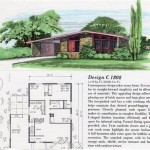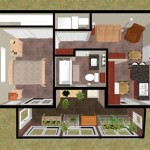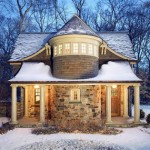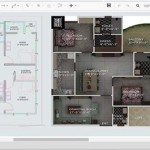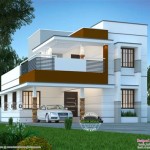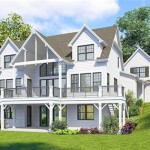House Plans with Shed Roof: Optimizing Design and Functionality
Shed roofs, characterized by their single sloping plane, offer a compelling alternative to more traditional roof designs. Their simplicity translates into several advantages, including cost-effectiveness, ease of construction, and a modern aesthetic. Choosing house plans that incorporate a shed roof requires careful consideration of various factors to maximize both the visual appeal and the functional benefits offered by this design element. The following exploration delves into crucial aspects of shed roof house plans, providing a comprehensive understanding of their potential and how to fully leverage them.
One of the primary attractions of a shed roof is its inherent ability to efficiently manage water runoff. The single slope directs rainwater and snow away from the building, minimizing the risk of water damage and promoting faster drainage. This is particularly advantageous in regions with heavy rainfall or snowfall. Properly designed overhangs further enhance this protection, shielding walls and windows from the elements. Furthermore, the angle of the slope can be adjusted to optimize sunlight exposure for passive solar heating during colder months, contributing to energy efficiency.
A well-executed shed roof design can contribute significantly to the overall curb appeal of a house. The clean lines and minimalist aesthetic complement modern and contemporary architectural styles. The slope can be oriented to create dramatic visual effects, enhancing the visual height of the building or emphasizing a particular design feature. Strategic use of materials, such as contrasting siding or accent lighting, can further accentuate the shed roof's architectural impact.
Beyond aesthetics and weather protection, shed roofs offer practical advantages in terms of interior space utilization. The high side of the roof creates opportunities for vaulted ceilings, allowing for more natural light and a sense of spaciousness. This can be particularly beneficial in smaller homes or rooms where maximizing vertical space is a priority. The resulting high walls can also accommodate taller windows or storage solutions, further enhancing the functionality of the interior.
Understanding the Structural Considerations
Designing a house plan with a shed roof necessitates a thorough understanding of the structural implications. The single slope exerts asymmetrical loads on the supporting walls, requiring careful engineering calculations to ensure structural integrity. The load-bearing walls must be designed to withstand these forces, preventing deflection or collapse. The roof framing system, typically composed of rafters or trusses, must also be adequately sized to support the roof covering and anticipated snow loads.
Different roofing materials possess varying weights and require different support structures. Lighter materials, such as metal roofing or asphalt shingles, may require less robust framing compared to heavier materials like tile or slate. Consulting with a structural engineer is crucial to determine the appropriate framing specifications and ensure the roof's long-term stability. The engineer will consider factors such as roof span, slope angle, and local building codes to develop a safe and efficient design.
Proper insulation is crucial in shed roofs to prevent heat loss or gain, depending on the climate. Insulation materials can be installed between the rafters or trusses, creating a thermal barrier that regulates indoor temperatures and reduces energy consumption. The type and thickness of insulation should be chosen based on the local climate and energy efficiency goals. Adequate ventilation is also essential to prevent moisture buildup within the roof structure, which can lead to mold growth and structural damage. Vents can be installed at the high and low points of the roof to promote airflow and maintain a dry environment.
The overhangs of a shed roof play a critical role in protecting the building's facade from the elements. Overhangs shield walls and windows from direct sunlight, reducing heat gain during the summer months. They also deflect rainwater and snow away from the building, preventing water damage and prolonging the lifespan of the siding. The size of the overhangs should be carefully considered based on the local climate and the orientation of the building. Longer overhangs provide greater protection but may also require additional structural support.
Optimizing Space and Light
Shed roofs can be strategically employed to maximize interior space and natural light. The high side of the roof creates the opportunity for vaulted ceilings, which enhance the sense of spaciousness and allow for more natural light to enter the room. Clerestory windows, positioned near the top of the high wall, can provide additional daylighting without compromising privacy. These windows allow sunlight to penetrate deep into the interior, reducing the need for artificial lighting and creating a brighter, more inviting atmosphere.
The slope of the shed roof can also be used to create unique and functional spaces. For example, the high side of the roof can be used to create a loft area or a mezzanine level, providing additional living space without increasing the building's footprint. This can be particularly useful in smaller homes where space is limited. The lower side of the roof can be used to create a more intimate and cozy atmosphere, perfect for bedrooms or reading nooks.
The orientation of the shed roof is crucial for optimizing passive solar heating. In colder climates, orienting the high side of the roof towards the south allows for maximum sunlight exposure during the winter months. This helps to warm the building naturally, reducing the need for artificial heating. In warmer climates, orienting the high side of the roof away from the sun can help to reduce heat gain, keeping the building cooler during the summer months. Overhangs can also be used to shade windows during the summer months, further reducing heat gain.
The interior design of a shed roof house should complement the roof's architectural features. Simple, clean lines and minimalist furnishings work well with the modern aesthetic of a shed roof. Light colors and natural materials can help to enhance the sense of spaciousness and light. Incorporating vertical elements, such as tall bookshelves or artwork, can further emphasize the height of the vaulted ceilings.
Cost-Effectiveness and Sustainability
Shed roofs are often more cost-effective to construct compared to more complex roof designs. The simplicity of the structure reduces the amount of materials and labor required, resulting in lower construction costs. The single slope also makes it easier to install roofing materials, further reducing labor costs. This cost-effectiveness can be particularly attractive for homeowners on a budget.
Shed roofs can contribute to the overall sustainability of a house. The slope of the roof can be optimized for solar panel installation, maximizing the building's potential for renewable energy generation. The efficient water runoff also reduces the risk of water damage, prolonging the lifespan of the building and reducing the need for repairs or replacements. The use of sustainable building materials, such as recycled roofing or reclaimed wood, can further enhance the environmental benefits of a shed roof.
The energy efficiency of a shed roof can also contribute to long-term cost savings. Proper insulation and ventilation can reduce energy consumption for heating and cooling, lowering utility bills. Passive solar heating can further reduce the reliance on artificial heating, resulting in significant cost savings over time. These energy-efficient features not only benefit the homeowner but also reduce the building's environmental impact.
Choosing a house plan with a shed roof can be a significant investment in long-term value. The modern aesthetic and functional benefits of the design can enhance the building's curb appeal and increase its resale value. The structural integrity and energy efficiency of a well-designed shed roof can also protect the building from damage and reduce operating costs over time. By carefully considering the various factors discussed, homeowners can maximize the benefits of a shed roof and create a comfortable, sustainable, and aesthetically pleasing living space.

10 2 Bedroom Shed House Plans And Designs Tiny Craft Mart

Studio House Plans 6 8 Shed Roof Tiny

10 2 Bedroom Shed House Plans And Designs Tiny Craft Mart

House Plans 12x11 With 3 Bedrooms Shed Roof Samhouseplans

10 2 Bedroom Shed House Plans And Designs Tiny Craft Mart

One Bedroom House Plans 6 With Shed Roof

One Bedroom House Plans 6 With Shed Roof

10 2 Bedroom Shed House Plans And Designs Tiny Craft Mart

Small House Plans 6 5x8 With 2 Bedrooms Shed Roof Samhouseplans

One Bedroom House Plans 6x6 With Shed Roof Samhouseplans
Related Posts

